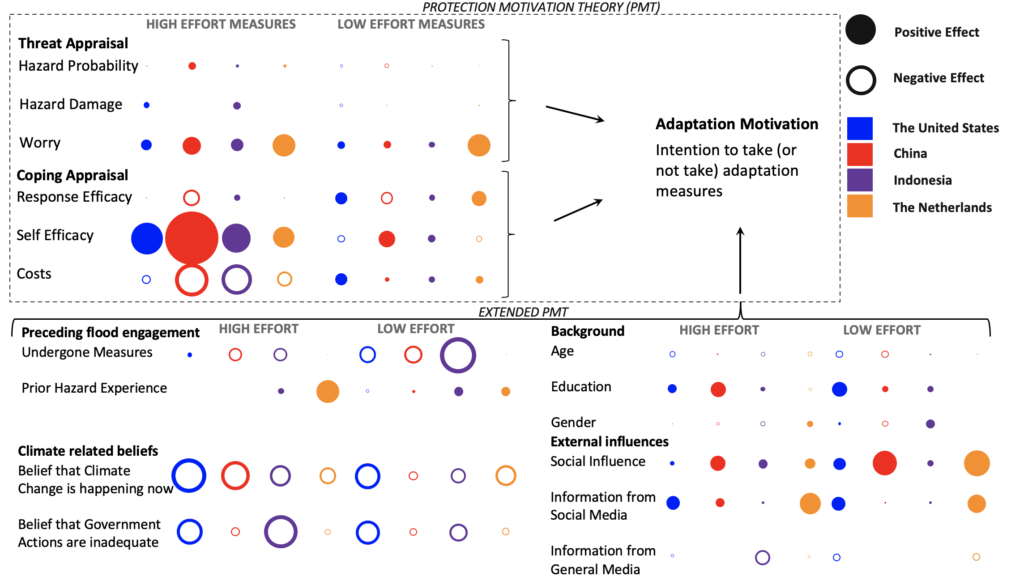Paper
- Contextualizing cross-national patterns in household climate change adaptation
- Nature Climate Change, 2021
- https://doi.org/10.1038/s41558-021-01222-3
As you are likely aware, we are in the midst of a growing climate crisis – with risks compounding faster than governments can contend with on their own. Floods are the most widespread and costliest climate-induced hazard worldwide and threaten millions of people annually. Household adaptation to floods has been shown to reduce damages and is a critical complement to government level action.
How then, can governments, NGOs, and risk managers motivate households to take protective action?
First, a fundamental understanding of what drives and hinders household behavior is critical. Data on household level climate adaptation are typically solicited and studied via surveys; the large majority of which have been conducted in Europe and the United States. Yet, while it is the people living in the Global South that are disproportionally affected by climate-induced hazards, the empirical evidence on the drivers of behavioral adaptation is limited. The question remains: to what degree do behavioral and social drivers of households’ adaptation to floods vary across countries?
Understanding this will permit researchers and policymakers to extrapolate knowledge and data from existing household adaptation research to data-scarce regions when formulating new adaptation policies and risk management strategies.
To address this gap in knowledge, our ERC lab launched a longitudinal survey in four diverse countries across the globe: the United States, China, Indonesia, and the Netherlands (N>6000). In our analysis we compare 16 different factors commonly utilized to motivate and estimate household adaptation intention across the four countries. We distinguish between two types of adaptation: High Effort measures (8) involve structural, usually irreversible modifications to one’s home, and Low Effort measures (10) less intensive non-permanent protection and communication actions.

*Circle size is proportional to the statistical effects that each of the 16 variables have on influencing adaptation intention (calculated from a Bayesian beta regression model).
We study the patterns in the effects of these 16 factors on household adaptation intention in the context of the social, political, and cultural context of each country. We find that while many factors have relatively consistent effects across countries, there are distinct differences in several variables (i.e. in households’ ability to adapt (Coping Appraisal), the influence of media (External Influence), and past flood experience (Preceding Flood Engagement)).
For example, differences in social media censorship between the two Global North Countries (the USA and Netherlands) and Global South (Indonesia and China), likely contribute to the differences in effect that ‘Information from Social Media’ has on adaptation. Other variations and, in some instances, contrasting effects are found with the influence of ‘Response Efficacy’ (how effective one believes a measure will be in minimizing damage) and in ‘Prior Hazard Experience’ (has the household experienced a flood in the past). We attribute the dissimilarities in effects to cultural and situational differences across the countries which we outline in our article.
While observed similarities offer promise in promoting adaptation in new, data-scarce contexts; salient disparities in effects indicate that unique social, institutional, and cultural contexts manifest meaningful variation among the factors influencing household adaptation behavior and intentions.
These differences indicate that strategies should be extrapolated from other contexts critically, as context-specific socio-behavioral drivers could discourage or even reverse individual adaptation motivation. In many contexts, adaptation at the household level is an essential complement to larger government actions to combat future flood risks. To promote household level action governments, researchers, and organizations can leverage these findings to construct messages and policies that facilitate household adaptation in a variety of contexts and provide the necessary incentives to spur action and construct a more flood resilient society.
